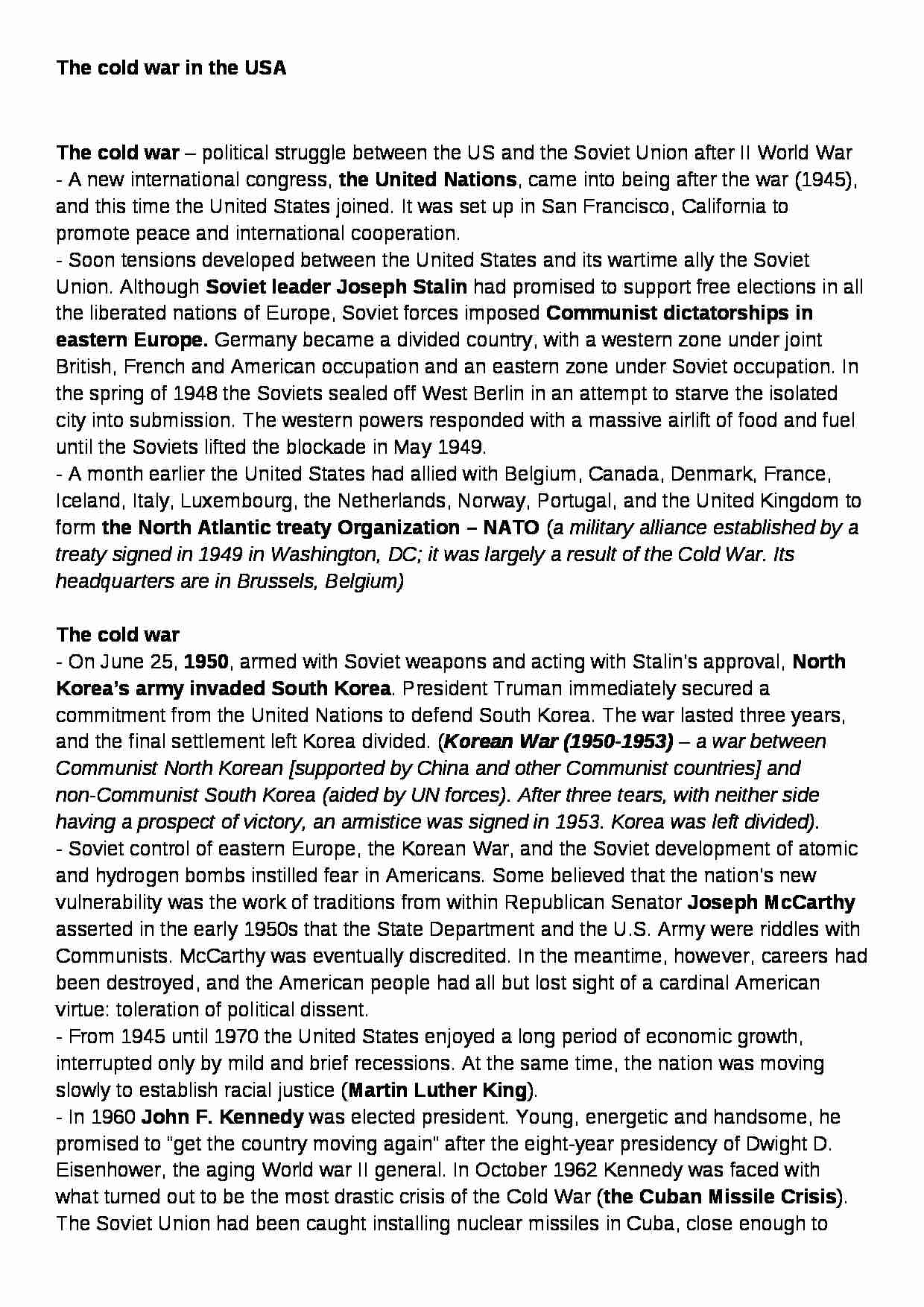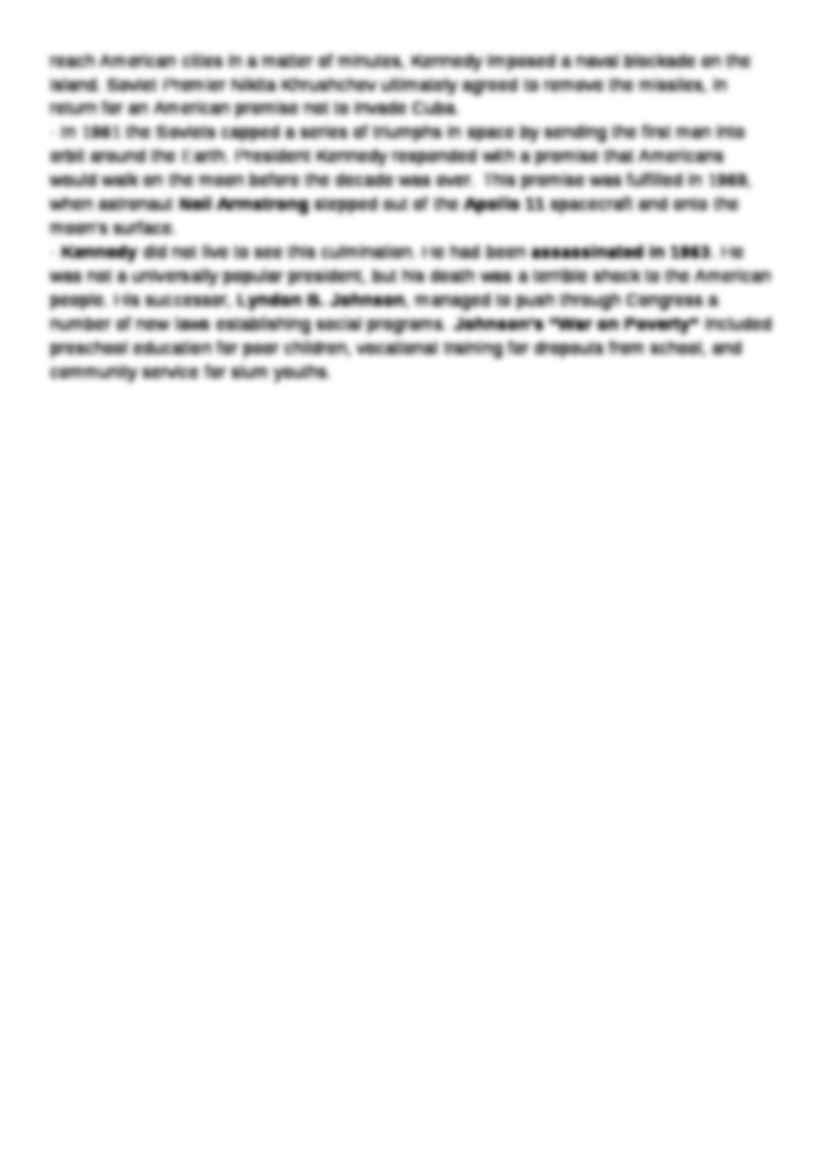To tylko jedna z 2 stron tej notatki. Zaloguj się aby zobaczyć ten dokument.
Zobacz
całą notatkę


The cold war in the USA
The cold war - political struggle between the US and the Soviet Union after II World War - A new international congress, the United Nations, came into being after the war (1945), and this time the United States joined. It was set up in San Francisco, California to promote peace and international cooperation. - Soon tensions developed between the United States and its wartime ally the Soviet Union. Although Soviet leader Joseph Stalin had promised to support free elections in all the liberated nations of Europe, Soviet forces imposed Communist dictatorships in eastern Europe. Germany became a divided country, with a western zone under joint British, French and American occupation and an eastern zone under Soviet occupation. In the spring of 1948 the Soviets sealed off West Berlin in an attempt to starve the isolated city into submission. The western powers responded with a massive airlift of food and fuel until the Soviets lifted the blockade in May 1949. - A month earlier the United States had allied with Belgium, Canada, Denmark, France, Iceland, Italy, Luxembourg, the Netherlands, Norway, Portugal, and the United Kingdom to form the North Atlantic treaty Organization - NATO (a military alliance established by a treaty signed in 1949 in Washington, DC; it was largely a result of the Cold War. Its headquarters are in Brussels, Belgium) The cold war - On June 25, 1950, armed with Soviet weapons and acting with Stalin's approval, North Korea's army invaded South Korea. President Truman immediately secured a commitment from the United Nations to defend South Korea. The war lasted three years, and the final settlement left Korea divided. (Korean War (1950-1953) - a war between Communist North Korean [supported by China and other Communist countries] and non-Communist South Korea (aided by UN forces). After three tears, with neither side having a prospect of victory, an armistice was signed in 1953. Korea was left divided). - Soviet control of eastern Europe, the Korean War, and the Soviet development of atomic and hydrogen bombs instilled fear in Americans. Some believed that the nation's new vulnerability was the work of traditions from within Republican Senator Joseph McCarthy asserted in the early 1950s that the State Department and the U.S. Army were riddles with Communists. McCarthy was eventually discredited. In the meantime, however, careers had been destroyed, and the American people had all but lost sight of a cardinal American virtue: toleration of political dissent. - From 1945 until 1970 the United States enjoyed a long period of economic growth, interrupted only by mild and brief recessions. At the same time, the nation was moving slowly to establish racial justice (Martin Luther King). - In 1960 John F. Kennedy was elected president. Young, energetic and handsome, he promised to “get the country moving again” after the eight-year presidency of Dwight D. Eisenhower, the aging World war II general. In October 1962 Kennedy was faced with what turned out to be the most drastic crisis of the Cold War (
(…)
…, energetic and handsome, he promised to “get the country moving again” after the eight-year presidency of Dwight D. Eisenhower, the aging World war II general. In October 1962 Kennedy was faced with what turned out to be the most drastic crisis of the Cold War (the Cuban Missile Crisis). The Soviet Union had been caught installing nuclear missiles in Cuba, close enough to reach American cities in a matter…
... zobacz całą notatkę




Komentarze użytkowników (0)